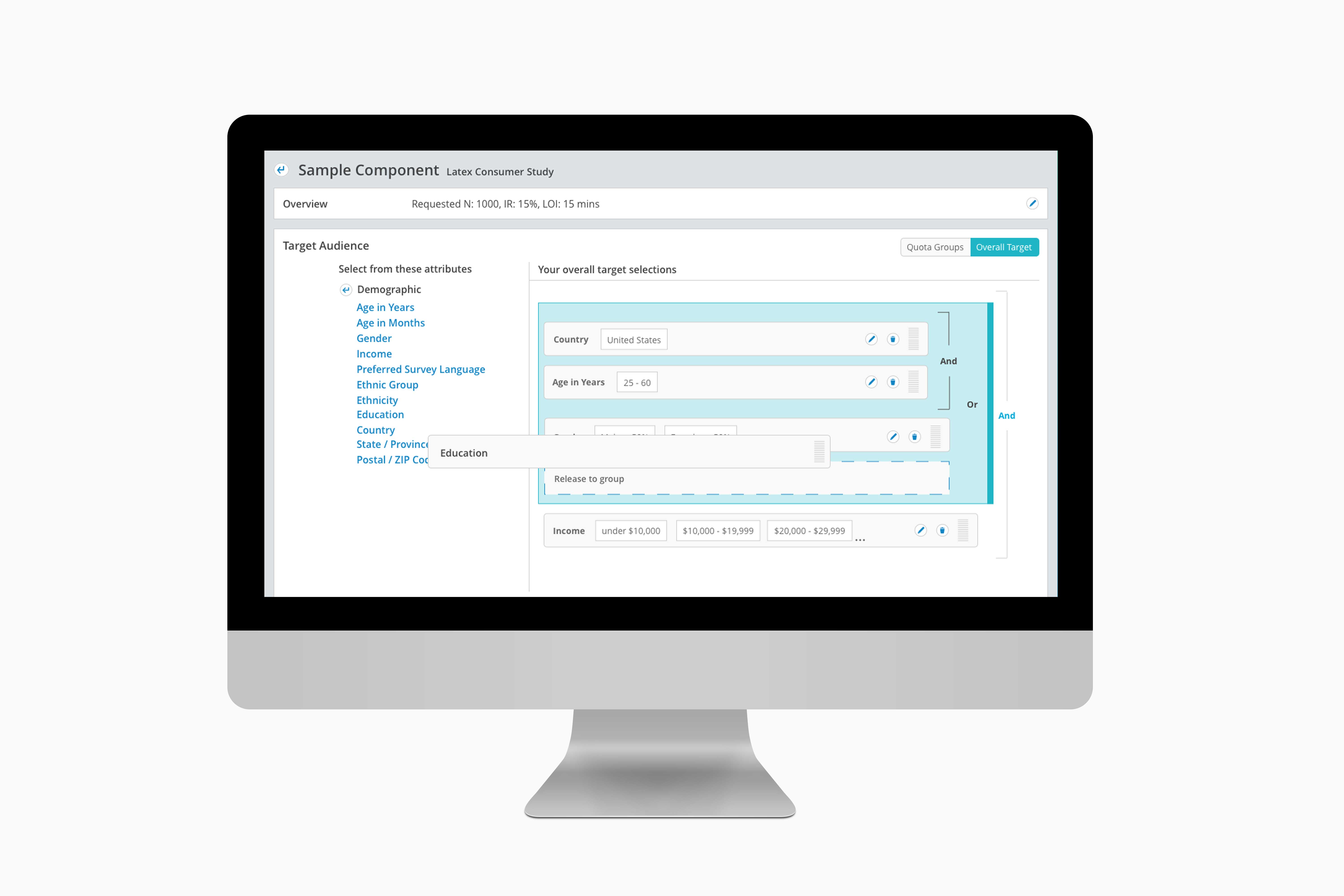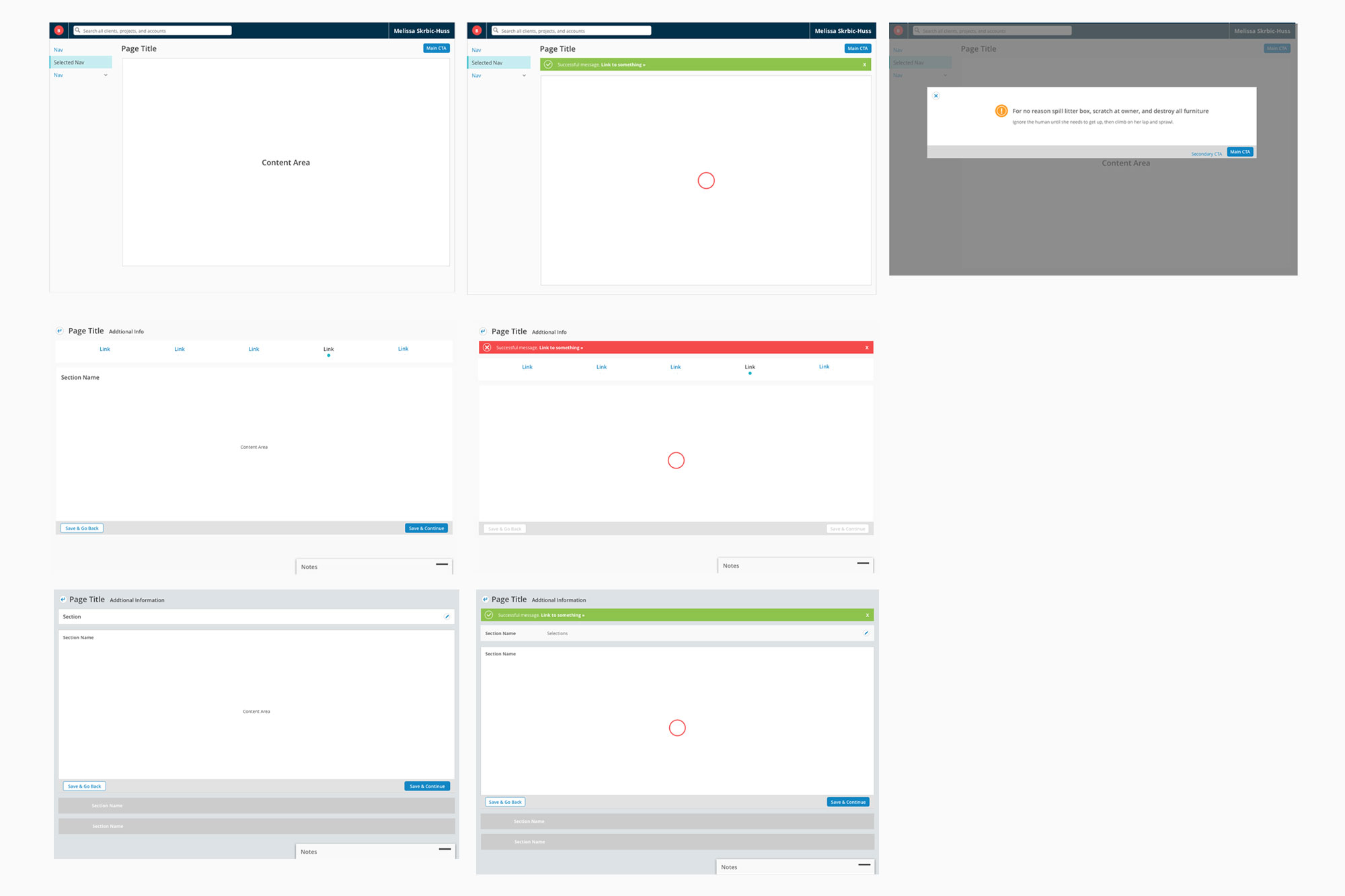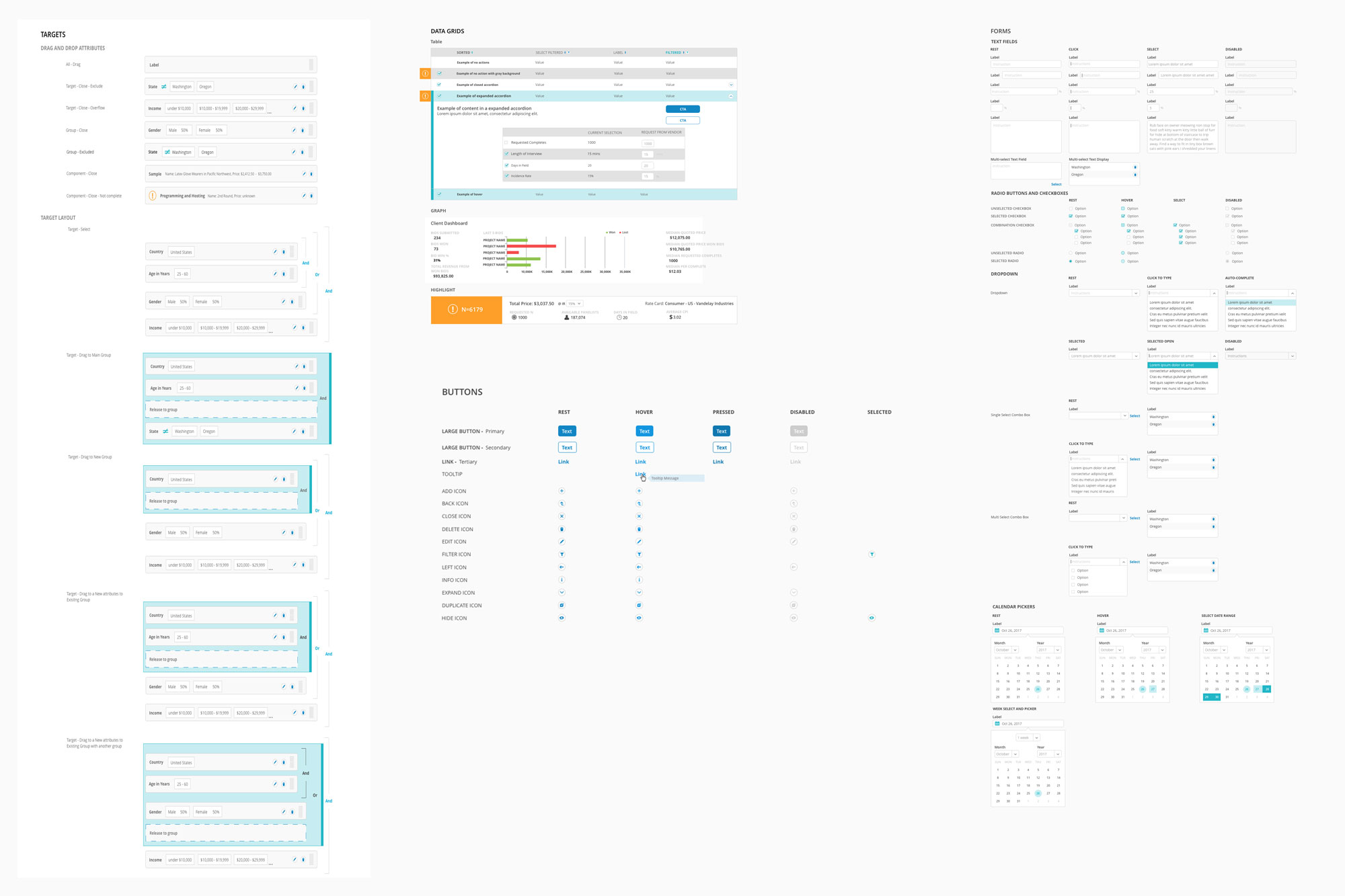ROI Rocket
UX Design
UI Design
I led the product and design process for the feasibility feature sets.
Fortune 500 and consulting companies need to determine if they have enough panelists to participate in their study by using the market research platforms.

Increase speed when receiving feasibility counts
Improve the user experience for creating target audiences
Improve the user experience of adding internal and external sample vendors
Explore pricing and feasibility counts based on project requirements
Gather insights on the current feasibility experience from users, with a focus on streamlining sales proposal process.
User Interviews
Stakeholder Interviews
UX competitive analysis
Experience Map
User Personas
Prototyping
User Testing
Post-launch monthly feedback sessions
During the discovery process, we defined two personas that create target audiences for market research studies: sales managers and project managers. Both users goals are the same, see how many available participants qualify for the study, but why they would complete the tasks are for different reasons.
"I need to see if we have enough qualified participants for the study quickly so I can let my client know we can fulfill the project."
The sample fielding industry is competitive. The company that responds the quickest typically is rewarded with the project. Sales managers need feasibility and pricing ASAP so they can respond to client requests within a couple of minutes.
"I need to see the target audience that the sales manager created so I can quickly set up the project."
Clients accept the project to start as soon as they approve the project. To speed up the project handoff, sales managers provide the project requirements and how they strategically created the target audience.
To understand when each user needs feasibility and how they would complete tasks, we created an experience map. We discovered that in every scenario, the user would conduct the same tasks, but would use the information differently.
We created a clickable prototype using Invision to help aid the user testing and provide usability insights. We learned that the prototype passed the usability test, but new feature concepts were confusing and not needed for most bids or projects.
After gathering more user insights, we changed feature names to be more intuitive and simplified the flow to not to force the user down a restricted path. Users mentioned during testing that the new experience was much faster and easier to use.
As UI development started, I worked with the front-end team to create reusable design complements. Using Sketch and Invision, I created a styleguide and design repository for the development team to get assets and use as a reference. The design system reduced the design handoff process by minimizing design comping time and design annotations.


The bid application introduced the feasibility features to the sales managers. We met with the users monthly to receive feedback and answer any questions. The users felt that they were part of the design process, which increased adoption rates. Creating target audiences is easier and supports more scenarios than the legacy application. Also, project handoffs are smoother as sales and project managers share the same data and requirements.
I love discussing interesting ideas, new collaborations, or your next marathon (running or watching).